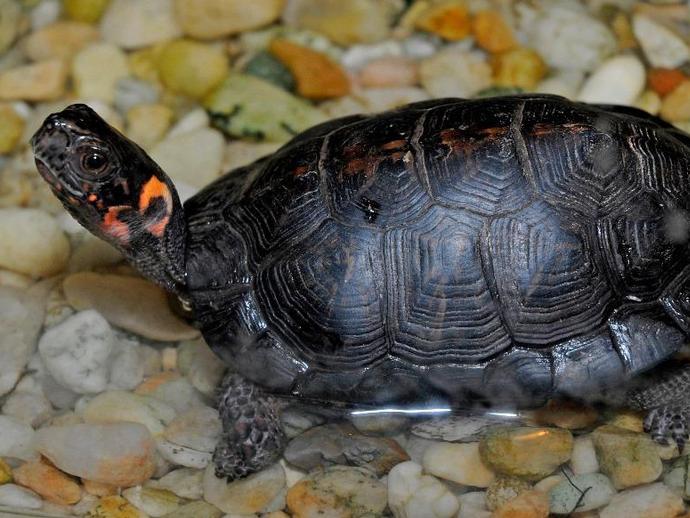February 3, 2021
Ben here with today's edition of #BenInNature presented by our friends at Carter Bank & Trust!
Here's our pick for Virginia's third rarest turtle: Glyptemys muhlenbergii, the bog turtle!
Bog turtles are quite unique in a variety of ways. For one, they're North America's smallest turtle, averaging just three to three and a half inches in length. They live in small colonies of about 20 individuals. They also have an unusual distribution that's broadly divided into a northern population and a southern population; the larger northern population occurs in parts of New England, while the smaller southern population occurs in a band that stretches from southwest Virginia down through North Carolina, South Carolina, Georgia, and Tennessee. The two populations are separated by a gap of more than 250 miles!
Unfortunately, these turtles are under serious threat, and they're considered critically endangered on the federal level. One of the main reasons for their endangered status is habitat loss. They prefer to live in meadows, bogs, marshes, and seeps, especially those with a high water table that's slightly acidic. Human development has eradicated a lot of these habitats, unfortunately. Several species of invasive plants also make these habitats difficult for bog turtles to survive in. They're also routinely collected for the black market pet trade, and since females only lay one clutch of about three eggs per year, it's difficult for their populations to rebound.
While bog turtles have a lot of challenges stacked against them, the good news is that they're pretty skilled at keeping a low profile. They spend most of their day either underwater, crawling through dense underbrush, or buried in mud. In Virginia, they're mostly active during May and June.
If you'd like to spot a bog turtle in Virginia, they have been recorded in just six counties: Carroll, Floyd, Franklin, Grayson, Patrick, and Roanoke. If you're lucky enough to spot one, snap a picture, wish it well, and consider yourself lucky to have seen one of Virginia's coolest, rarest turtles!
Thank you to the Virginia Herpetological Society (www.virginiaherpetologicalsociety.com) for the use of this photo, which was taken by John White.
ABOUT #BenInNature
Social distancing can be difficult, but it presents a great opportunity to become reacquainted with nature. In this series of posts, Administrator of Science Ben Williams ventures outdoors to record a snapshot of the unique sights that can be found in the natural world. New updates are posted Monday - Friday, with previous posts highlighted on the weekends. This series of posts is made possible thanks to the support of VMNH Corporate Partner Carter Bank & Trust (www.cbtcares.com).
NATURE PHOTO IDENTIFICATIONS
If you discover something in nature that you would like help identifying, be sure to message us right here on Facebook with a picture (please include location and date of picture) and we'll have our experts help you identify it!

 Hours & Admissions
Hours & Admissions Directions
Directions

